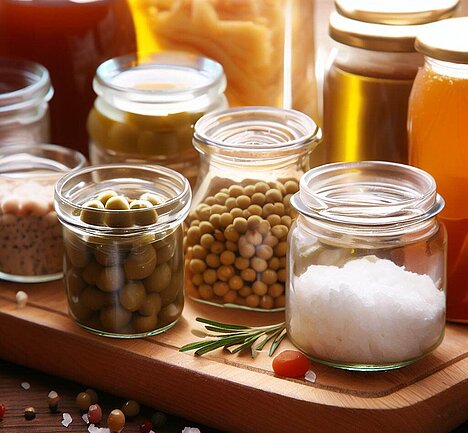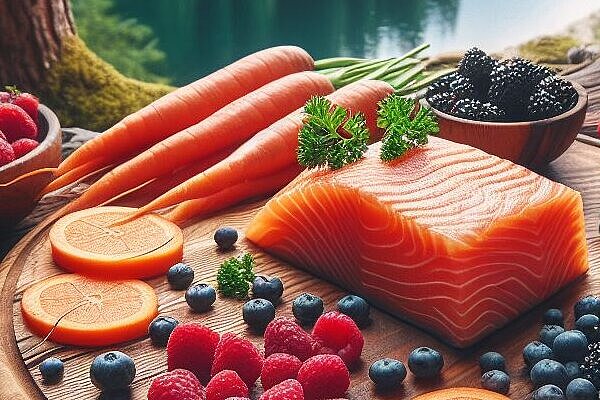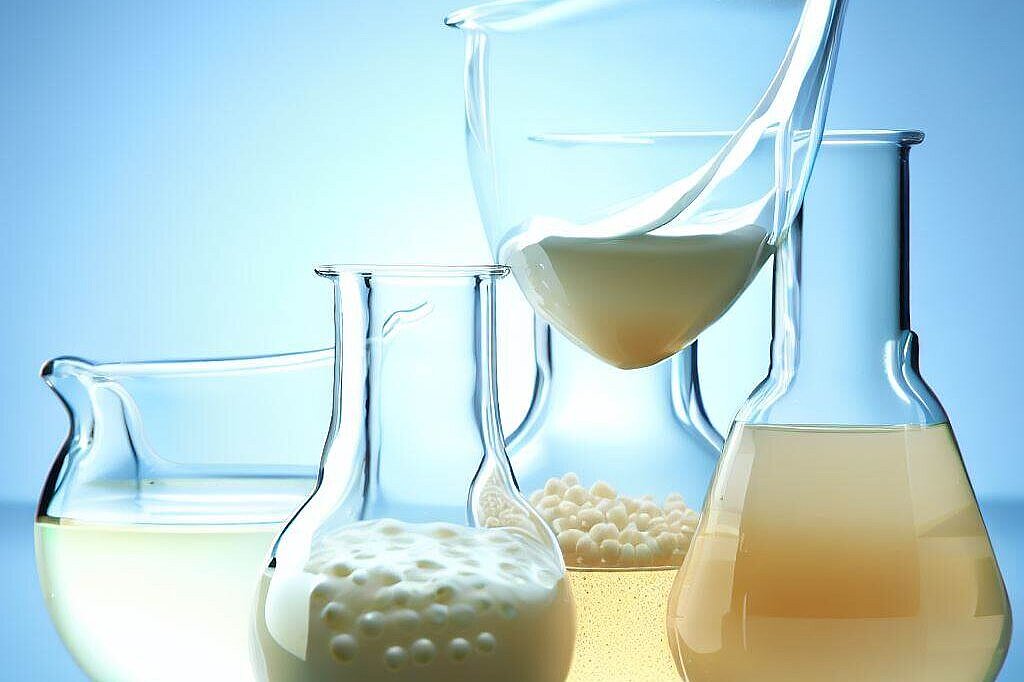Preservatives

What are preservatives?
Preservatives are substances that prevent or delay the multiplication of microorganisms such as bacteria, fungi or yeasts. They are often added to foods to protect them from spoiling and to maintain their quality. Preservatives can be of natural or artificial origin.
What preservatives are there in dog food?
There are many different preservatives that can be used in dog food. Some of them are
- Antioxidants: these protect the fat in the food from becoming rancid, thus extending its shelf life. Examples of antioxidants are vitamin C (ascorbic acid), vitamin E (tocopherols) or rosemary extract.
- BHA/BHT (E 320/E 321): These are synthetic antioxidants that also preserve fat. However, they are suspected of being carcinogenic and weakening the immune system.
- Carrageenan (E 407): It is a vegetable gelling agent obtained from red algae. It is often added to wet food to make it creamier. However, it can also trigger inflammation in the gastrointestinal tract.
- Calcium sorbate (E 203): It is a salt of sorbic acid that acts as a mold inhibitor. However, it can also cause allergies or skin irritation.
- Gelatine: This is an animal protein obtained from bones or hides. It is often used as a binding agent or gelling agent. It has no known negative effects on dogs.
- Locust bean gum (E 410): It is a vegetable thickener made from the seeds of the carob tree. It is often used as a source of fiber and can aid digestion.
- Lecithin (E 322): It is an emulsifier derived from soy or eggs. It helps to mix fat and water and ensures better digestibility of the feed.
- Sodium hexametaphosphate/sodium nitrite (E 250): These are salts of phosphoric acid and nitric acid respectively, which act as colour stabilizers and are intended to prevent meat from turning grey or smelling rancid However, they can also promote the formation of nitrosamines, which can be carcinogenic.
What are the advantages of preservatives?
Preservatives have the advantage that they make the food last longer and thus produce less waste They can also help to ensure that the food remains tastier and does not lose its nutritional values
What are the disadvantages of preservatives?
However, preservatives also have some disadvantages that you should be aware of. Some of them are:
- Synthetic preservatives can be toxic to your dog if he eats them every day for the rest of his life. They can be harmful to your dog's intestinal mucosa and metabolism and can even have a cell-damaging or carcinogenic effect.
- Although natural preservatives are usually better tolerated, they are not always harmless. They can trigger allergies or intolerances or be too ineffective.
- Preservatives can change the taste and appearance of the food and thus reduce the dog's acceptance.
- Preservatives can mask or destroy the natural ingredients of the food and thus reduce its nutritional value.
How can you avoid preservatives in dog food?
If you want to avoid preservatives in your dog's food, you have several options:
- You can prepare the food yourself and serve it fresh. However, you must make sure that you cover all the nutrients your dog needs.
- You can use high-quality dry food that does not contain any artificial preservatives. The advantage of dry food is that it is less susceptible to spoilage due to its low water content. However, you should make sure that the food is not too old and is stored in a cool, dry place.
- You can switch to wet food that only contains natural preservatives such as vitamin C or E. These are usually gentler on your dog than synthetic substances. However, you should make sure that the food is not opened for too long and is stored in the refrigerator.
Preservatives in dog food have their advantages and disadvantages. They can make the food last longer and maintain its quality, but they can also pose health risks for your dog.
If you notice any signs of hypersensitivity or poisoning in your dog, you should see your vet immediately. We are not a substitute for a vet, but we try to be as accurate as possible. Every dog reacts differently and we recommend you get a second opinion or consult your vet if in doubt.
Stay healthy and take good care of your four-legged friend!😊
Similar to Preservatives
There are different types of antioxidants, which can come from natural or artificial sources. The most important natural antioxidants include Vitamin E: It strengthens the immune system and...
Emulsifiers consist of molecules that are both water-loving and fat-loving. This means that they can combine with both water and oil. As a result, they form a kind of bridge between the two liquids...
Stabilizers are chemical or natural substances that ensure that the components of a product do not separate or change. For example, they prevent fat and water from separating in a cream or yoghurt...
Thickening agents are substances that are used to increase the consistency of liquids or semi-solids. They are often used in the food industry to make products such as yoghurt, sauces or ice cream...



